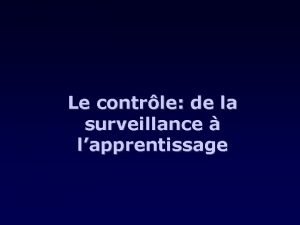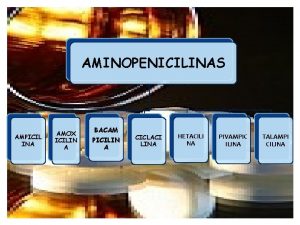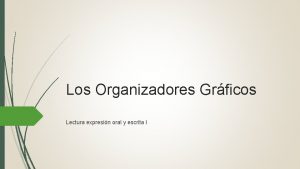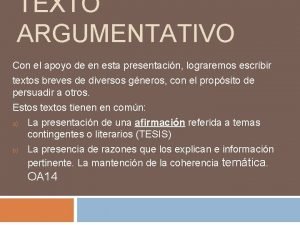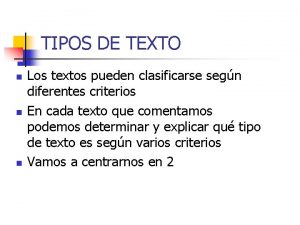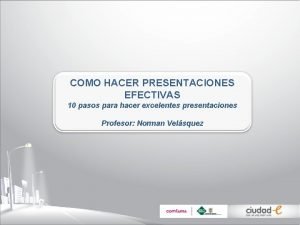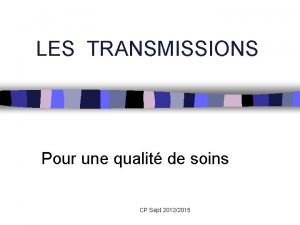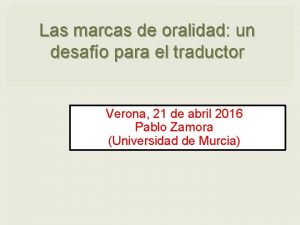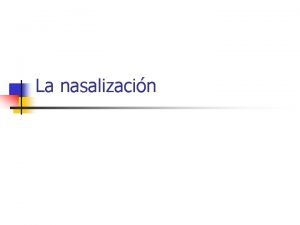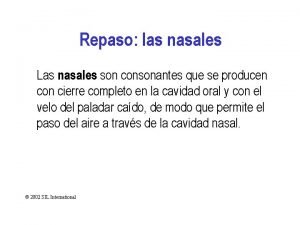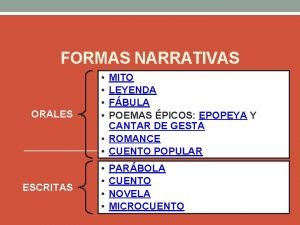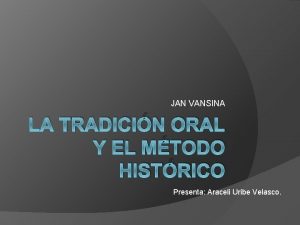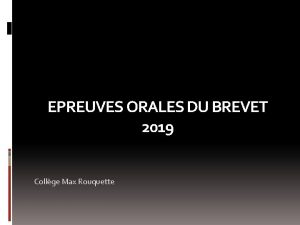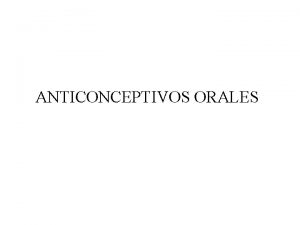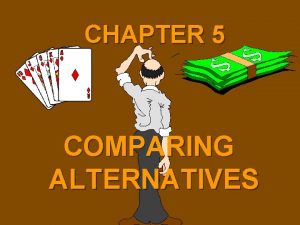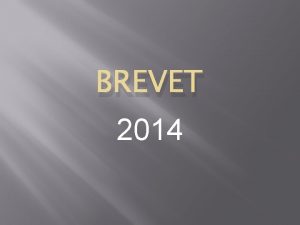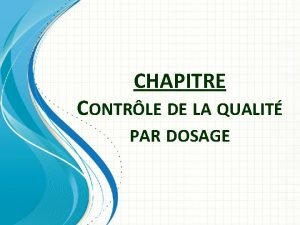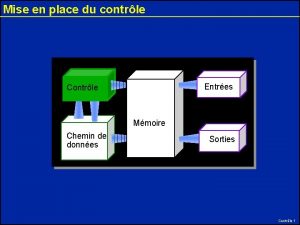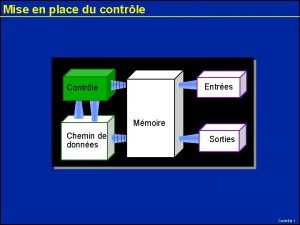Contrle de leon 6 Epreuves orales alternatives 1






















- Slides: 22

Contrôle de leçon 6

Epreuves orales alternatives 1) Polytechnique & ENS 2) Mines Télécom 2 exercices spécifiques exigeant des compétences utiles à l’exercice de synthèse

L’épreuve orale à Polytechnique Préparation de 30 mn / oral de 20 mn Support: extrait vidéo Tâches: compte-rendu, discussion et entretien Un exemple de rapport sera accessible sur le cahier de texte. En voici un extrait:

Pour rappel, les candidats bénéficient de 30 minutes de préparation pendant lesquelles ils visionnent une vidéo extraite d’émissions télévisées, de débats, de bulletins d’information ou encore de documentaires. La longueur du document se situe entre 4 et 6 minutes et son contenu porte sur des sujets variés : thèmes d’actualité politique, économique, sociale, culturelle, scientifique, documentaires. Les candidats visionnent le document sur une tablette dont ils ont le contrôle. Ils peuvent interrompre la vidéo à leur guise. Nous les encourageons à prêter attention aux images et à la construction de la séquence visionnée. L’épreuve dure 20 minutes. Elle consiste à faire une restitution précise et structurée du document, accompagnée d’un commentaire construit. S’ensuit un échange avec les deux examinateurs. Pour la restitution, les candidats veilleront à ne pas excéder la moitié du temps de parole imparti.

No one can be expected to compile 100% of the information provided by any document. Your account will thus necessarily be deficient. You can compensate the loss and add value: -by making the effort to speak ‘in your own words’ as much as possible, in order to clarify the message; -by highlighting its specific structure and filling in the LOGICAL GAPS (the equivalent of paragraphs in a video is what you call ‘montage’); -by making the most of the significant elements in the footage, without dwelling on it! -by paying attention to the speakers’ tone: what they say does not matter more than HOW they say it (verbs of speech).

Example #1 Download the video on whatsapp, watch at leisure*, take notes and get ready for a rundown (= restitution). Pay attention to the structure of your presentation! (*10 minutes)

Added value#1 : determine a logical order 1 “I think we’ve made a lot of progress but we’re nowhere near where I wanted to be” 2 “By 2020, I want to get to the point where it is equal between men and women. ” 3 “Over the last three years, 60% of the promotions we’ve done have been women. ” 4 “I think we’ve got much more to do there and I’m determined to get it right!” 5 “I’m a great believer in action behind the principles you stand for!” 6 “The evidence is in fact pretty clear: the top-paid stars are dominated very much by men. ” 7 “For all the talk about gender equality, the BBC is way behind where it should be!” 8 “We’re making big strides!” 9 “If you look at the gender pay gap, which on average in the UK is 18%, we’re at 10%. ” 10 “We’re in a better place than the average, but I’m not complacent about that!”

Added value#2 : put it in your own words and pay attention to the verbs of speech Exercice à faire pour le 28 janvier + fiche lexicale sur les verbes de parole (cf. cahier de texte)

L’épreuve orale à Mines Télécom Pas de préparation / oral de 20 mn Support: document iconographique Tâches: présentation rapide du candidat, réaction à un document iconographique et échange avec l’examinateur, jeu de rôle / mise en situation sur une thématique en lien avec le document iconographique (le candidat mène la discussion) Le guide pour l’oral (toutes matières) est accessible sur le cahier de texte

Part 1: reacting to a picture

How to ‘react’ to a picture? Step 1: start with what you see, that is to say, the objective elements and context. Step 2: take the viewpoint of the photographer (or cartoonist) and take into consideration both the point of focus and perspective. What are we shown that we do not immediately see? Step 3: from an abstract viewpoint, what is the issue at stake (i. e. what are the problems related to the picture.

1) What do you see?





2)What are you shown?



3)What is the issue at stake? While those two women were demonstrating against the Miss America beauty contest, lampooning the stereotype of the woman as a sexual object of consumption, a man stood by, seemingly more interested in catching an eyeful of the playboy centerfold held up by one of the protesters than in trying to understand or to support the feminist cause. The shadow of the photographer in the foreground is a reminder that for all the hype about ‘the gender gap’, discriminations die-hard: 50 years on, women are indeed still struggling against sexual abuse, the ‘glass-ceiling’ and the consequences of a parental leave on their personal careers.

Part 2: role play

This is Mary. I’m her daughter… Group 1: read the article by Mary’s daughter and get ready for an interview with group 2. Group 2: you are going to conduct an interview with Mary’s daughter. There can be no interview without an ulterior motive: your point must therefore be to gather enough information about Mary to be able to write an article for the Guardian!
 Contrle parental software
Contrle parental software Contrle
Contrle Contrle parental software
Contrle parental software Contrle parental
Contrle parental Contrle parental
Contrle parental Contrle technique
Contrle technique Carboxipenicilina
Carboxipenicilina Organizador grafico de expresion oral
Organizador grafico de expresion oral 20speling
20speling Texto argumentativo con tesis
Texto argumentativo con tesis Ertopenem
Ertopenem Necesidades orales
Necesidades orales Presentaciones orales efectivas
Presentaciones orales efectivas Les transmissions écrites et orales
Les transmissions écrites et orales Que es una marca de oralidad
Que es una marca de oralidad Pundie tigua
Pundie tigua Antipseudomonas orales
Antipseudomonas orales Mbohapy tero
Mbohapy tero Cuales son los textos orales
Cuales son los textos orales Nombre de consonante nasal
Nombre de consonante nasal Poemas orales
Poemas orales Tradiciones y testimonios orales
Tradiciones y testimonios orales Que es describir
Que es describir

